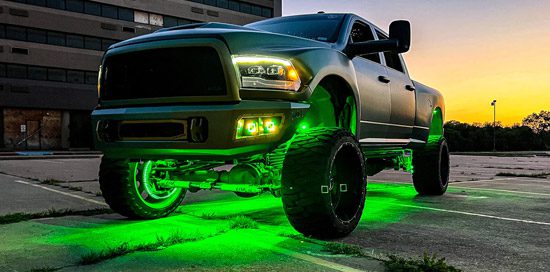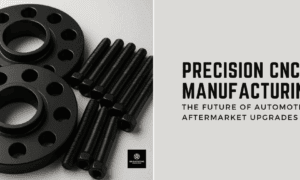RGB LED automotive lighting is revolutionizing the way vehicle owners enhance style and aesthetics, offering vibrant, customizable colors that make any car stand out. These lighting solutions not only enhance your car’s appearance but also improve visibility and dynamic driving experience. In this article, we’ll explore how RGB LED automotive technology works, its benefits, and tips for integrating it seamlessly into your vehicle.
Understanding RGB LED Technology
RGB LEDs combine Red, Green, and Blue lights in a single unit, allowing them to produce millions of colors through a process called additive color mixing. By adjusting the brightness of each color, you can create virtually any color, including white when all three are fully on.
How Colors and Effects Are Controlled
- Physical Controllers: Manual devices to change colors and brightness.
- Mobile Apps: Wireless control via Bluetooth or Wi-Fi for colors, brightness, and effects.
- Integrated Systems: Some cars let you control RGB LEDs through the infotainment system for seamless operation.
How They Work in Cars
RGB LEDs create colors by mixing red, green, and blue light. By adjusting the brightness of each color, they can produce different shades and lighting effects.
A car’s control system or a dedicated lighting module manages these LEDs, adjusting colors and brightness based on driver settings, driving modes, or external conditions. For example:
- Interior lights may shift colors when switching to sport mode.
- Exterior lights might display a welcome animation when the car is unlocked.
RGB LEDs use intelligent electronic control to make vehicle lighting fully customizable, dynamic, and visually striking.
Applications for Vehicle Aesthetics
Modern vehicles focus on not just performance and comfort but also visual appeal and user experience. RGB LEDs contribute significantly to this by offering colorful, flexible, and intelligent lighting solutions that enhance functionality.
- Interior Ambient Lighting
RGB LEDs allow drivers to personalize the interior lighting of their vehicles by changing colors, brightness, and patterns to match their mood or driving conditions. Automakers also design unique lighting themes to showcase their brand identity. This not only enhances the vehicle’s style but also creates a more comfortable and enjoyable atmosphere inside the cabin. - Instrument Clusters and Dashboards
RGB LEDs make car dashboards easier to read by showing alerts in different colors. Green means everything is working normally, yellow warns the driver of a possible issue, and red signals a serious problem that needs attention. This simple color system helps drivers see information quickly and stay safe on the road. - EV Charging Indicators
In electric vehicles, RGB LEDs use clear color lights to show charging status and battery levels in real time. These lights are durable, bright, and easy to see, allowing drivers to check charging progress clearly even in sunlight.
Benefits of RGB LED Automotive Lighting
RGB LED lighting is becoming a top choice for both car owners and manufacturers because it combines style, functionality, and innovation. Here are the main benefits of using RGB LED lights in vehicles:
- Customization and Personalization
RGB LEDs allow drivers to personalize their vehicle’s lighting, choosing colors and effects that match their style, mood, or driving conditions. This makes each vehicle unique and expressive.
- Better Visibility and Safety
RGB LEDs enhance vehicle visibility in low-light conditions and illuminate interior controls, making driving safer and more comfortable.
- Energy Efficiency and Long Lifespan
RGB LEDs use less energy and last longer than traditional bulbs. This reduces the load on the car’s electrical system and helps save energy over time.
- Enhanced Aesthetic Appeal
RGB lighting adds visual interest with color-changing and dynamic effects, making vehicles look stylish and eye-catching for shows, events, or everyday driving.
- Durability and Reliability
Modern RGB LED systems are made to endure tough automotive conditions. They resist vibration, moisture, and extreme temperatures, ensuring long-lasting performance.
RGB LED lights enhance your car’s style, safety, and efficiency, making them a durable and functional upgrade.
How to Install RGB LED Lights in Your Car
Adding RGB LED lights can make your car look more stylish inside and out. Follow these steps to get a neat, professional result:
- Plan Where to Put the Lights
Measure areas like footwells, under seats, door panels, and the dashboard. This helps you buy the right length of LED strips and avoid unnecessary cutting.
- Clean Surfaces First
Wipe the area with isopropyl alcohol to remove dust, grease, and dirt so the LEDs stick properly.
- Pick the Right Power Source
Most LED kits use 12V DC. You can:
- Use a cigarette lighter adapter – easy to install and remove.
- Wire directly to the fuse box – more permanent, but it requires some basic electrical skills.
Ensure your power source has a fuse to prevent electrical problems or damage to your lights.
- Use Good Connectors and Controllers
Cheap connectors can cause flickering or connection problems. Choose quality controllers that let you dim lights, cycle colors, or sync with music.
- Test the LEDs First
Connect the LEDs to power and the controller before permanent installation to ensure all lights work correctly.
- Use Smart Controls
Many kits can be controlled with a smartphone app. You can adjust colors, brightness, and effects easily.
- Make Sure They Don’t Overheat
LED lights generate heat, so install them where air can circulate. Avoid placing them in fully enclosed spaces to prevent damage and ensure they last longer.
- Hide the Wires Neatly
Use cable ties or wire covers to keep wires organized. Tuck the wires along the car’s existing wiring or under trim pieces to keep everything looking neat and organized.
- Don’t Overload Your Car’s Electrical System
Ensure your LED setup doesn’t draw more power than your vehicle can handle to avoid blown fuses or electrical damage.
Following these tips will help your RGB lights look professional, stay safe, and last longer.
Trends in Automotive Lighting Aesthetics
Automotive lighting is evolving beyond basic illumination. Here are the key trends shaping vehicle aesthetics today:
- Adaptive and Communicative Lighting
Modern vehicle lighting adjusts to driving conditions and communicates with the environment, enhancing safety by signaling warnings to pedestrians, cyclists, and other drivers.
- Augmented Reality (AR) Projection
AR lighting projects navigation and safety alerts onto the road, improving driver awareness and reducing distractions.
- Laser and OLED Technologies
- Laser headlights: Brighter light with lower energy use.
- OLED panels: Flexible, thin, and visually creative designs for unique aesthetics.
- Personalization and Brand Identity
Automakers use lighting to give vehicles a unique look and reinforce brand identity, while allowing drivers to customize colors and effects to reflect their personal style.
Modern automotive lighting is adaptive, interactive, energy efficient, and enhances the driving experience.
Conclusion
RGB LED lighting greatly improves the appearance and functionality of modern vehicles. It adds a stylish, high-tech look while also enhancing visibility and safety on the road. With options for color changes and lighting effects, drivers can personalize their cars to match their preferences. When installed and used properly, RGB LEDs not only make a vehicle more attractive but also create a more enjoyable and modern driving experience.



































